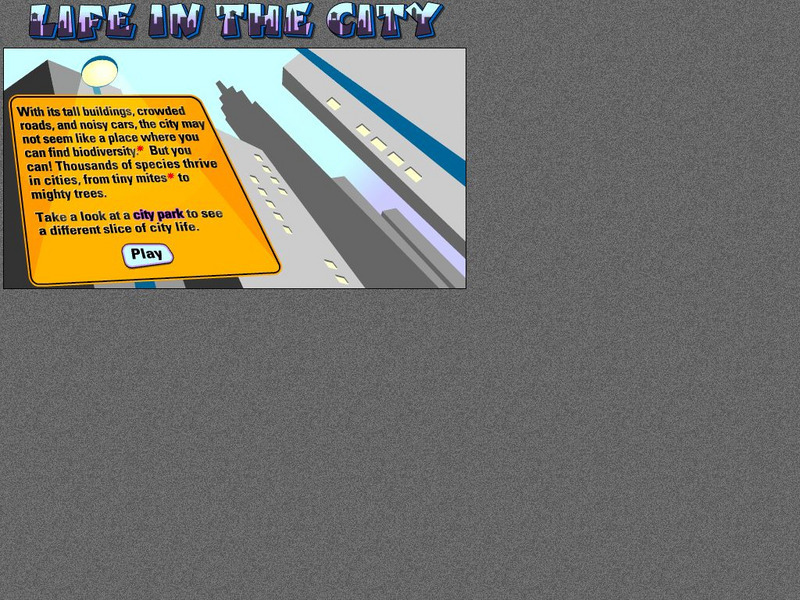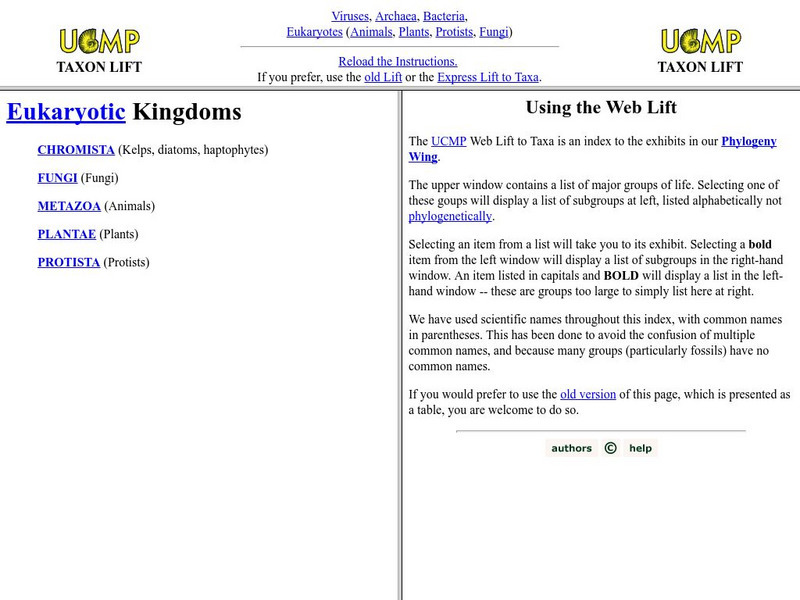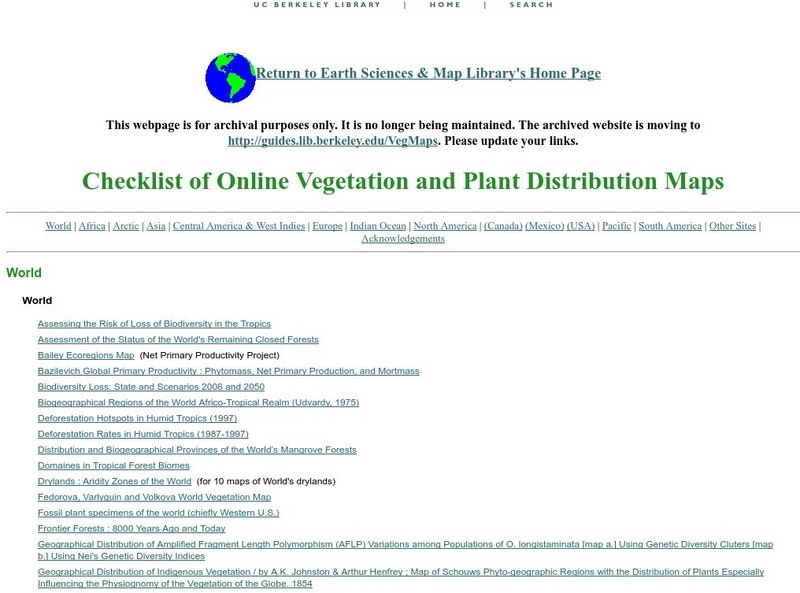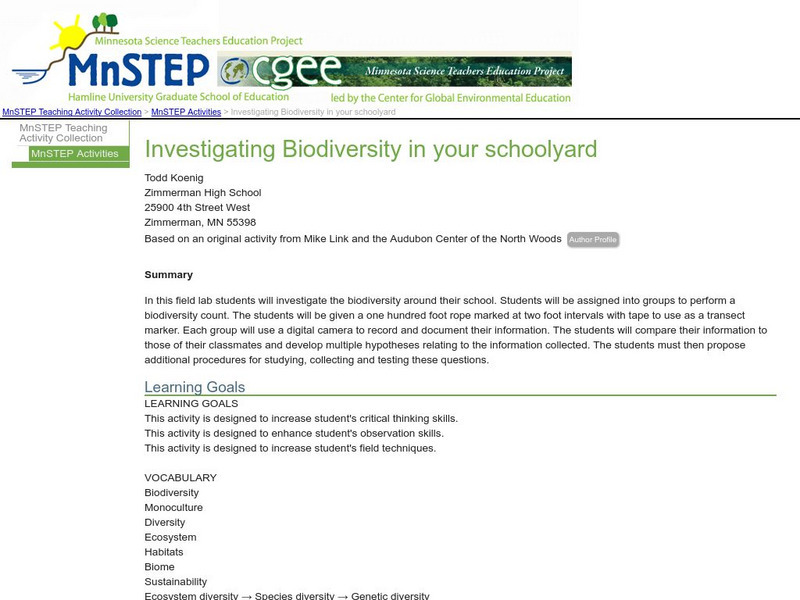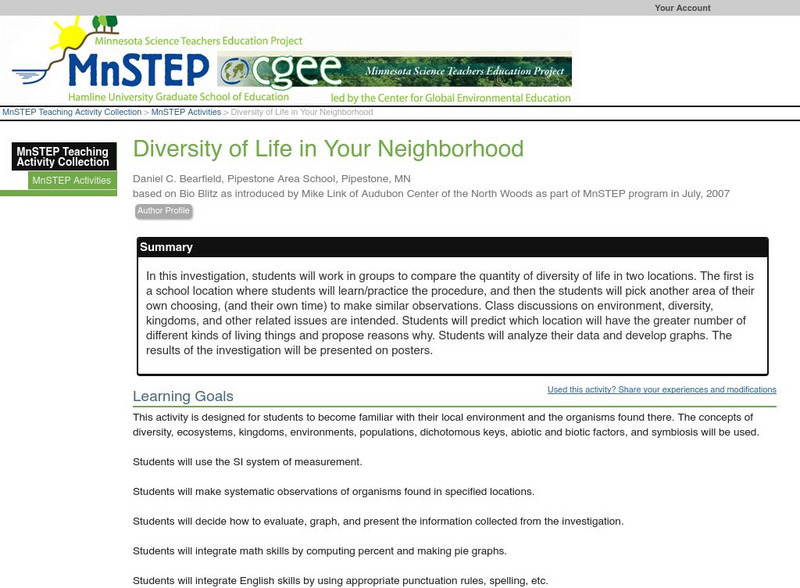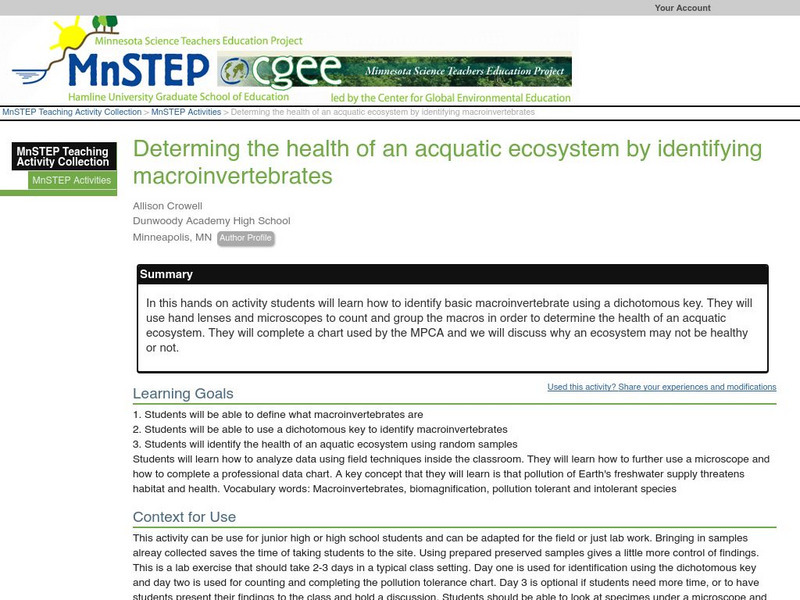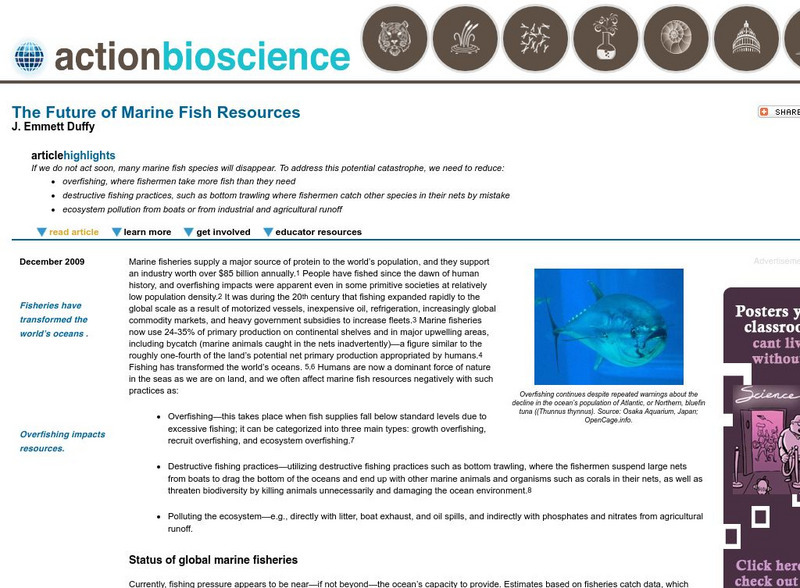San Diego Natural History Museum
San Diego Natural History Museum
This site provides general information, exhibits, museum news, etc. about the San Diego Natural History Museum.
Other
Sierra Club of Canada
The Sierra Club of Canada site covers energy, environment, biodiversity, and sustainable economy issues.
Center for Educational Technologies
Nasa Classroom of the Future: Coral Reefs: Dissappearing Resource
Why are the reefs disappearing? Use this site to explore the science behind the issue. Useful at several grade levels.
Biology Corner
Biology Corner: Biodiversity of Ponds
In this lesson plan site, students will observe and record data on three ponds. The goal is to identify the types of organisms in each pond and prepare a report that delves into the biodiversity of each site. Links to videos about pond...
E-learning for Kids
E Learning for Kids: Science: Caribbean Sea: Mexico: What Is Classifying?
Christina wants to classify all kinds of different things. Help her sort things into main groups.
American Museum of Natural History
American Museum of Natural History: O Logy: Life in the City
Biodiversity can be found in many places, including city parks. At this OLogy learning game site, players use a magnifying glass to find organisms that live there and also learn something about how each organism relates to others nearby.
American Museum of Natural History
American Museum of Natural History: O Logy: What's the Big Idea? Biodiversity
Find information about diversity among genes, species, and ecosystems that helps answer questions about the importance of biodiversity and how we can save species from extinction.
University of California
Ucmp: Web Lift to Taxa
Alphabetical listing from the University of California of info on each of the animal phyla. Includes scientific and common names and photos. Characteristics of each group are explained in detail.
American Museum of Natural History
American Museum of Natural History: Ology: Kinds of Biodiversity
Explains what biodiversity is, why it is important, threats it faces, and what people can do to help it survive.
American Museum of Natural History
American Museum of Natural History: Ology: Life in the City
Explore a city park to learn what tiny species live there.
University of California
U.c. Berkeley Libraries: Plant Distribution Maps
This resource provides a list of online maps of world vegetation such as biomes, forests and plants.
Science Education Resource Center at Carleton College
Serc: Minnesota Tree Blitz
This activity serves as an introduction to tree identification and helps middle schoolers learn about the natural world around them. While exploring trees of Minnesota, students will recognize biodiversity of trees and learn how to...
Science Education Resource Center at Carleton College
Serc: Investigating Biodiversity in Your Schoolyard
In this field lab, students will investigate the biodiversity around their school and record and document the information they find. The students will compare their information to those of their classmates, develop multiple hypotheses...
Science Education Resource Center at Carleton College
Serc: Insect Investigations
In this instructional activity, students will explore the life cycles of insects, how they are classified by Entomologists and their role within an ecosystem. Students will also investigate different habitats to observe the biodiversity...
Science Education Resource Center at Carleton College
Serc: Diversity of Life in Your Neighborhood
Students go outdoors to compare the diversity of life in two locations. Following the observations, hold class discussions on environment, diversity, kingdoms, and other related issues.
Science Education Resource Center at Carleton College
Serc: Simpson's Reciprocal Index: Identify and Compare Habitat Biodiversity
In this biology field lab, students will collect insects from two different habitats and use them to quantify the biodiversity of each habitat.
Science Education Resource Center at Carleton College
Serc: Identifying Macroinvertebrates to Determine Health of Aquatic Ecosystem
In this hands on activity students will learn how to identify basic macroinvertebrate using a dichotomous key. They will complete a chart used by the MPCA and we will discuss why an ecosystem may not be healthy or not.
Science Education Resource Center at Carleton College
Serc: Using Plant Surveys to Study Biodiversity
An extended field investigation intended as launch into several concepts in environmental science including biodiversity, human impacts on natural systems, and energy transfer in ecosystems.
Science Education Resource Center at Carleton College
Serc: Arthropod Diversity and Evolution an After School Program
This website provides information required for a hands-on program that enables students to work alongside active museum curators, postdoctoral researchers, and collection managers. The programs will teach students to identify, classify,...
Science Education Resource Center at Carleton College
Serc: How Biodiverse Is Lake Superior? An Exercise in Proportions
An exercise in critical thinking, as well as practice in percents, proportions, and probabilities. Learners research to gather information, then use their math skills to perform calculations on the data.
PBS
Newton's Apple: Spotted Owls and Old Growth Forests
This site from Newton's Apple, which is a production of KTCA Twin Cities Public Television, provides insights, vocabulary, resources and a main activity on the subject of why owls are threatened.
American Institute of Biological Sciences
Action Bioscience: Speciation and Biodiversity
As many species are going extinct due to healthy habitats being destroyed humans are depleting the world of its natural resources. Understand the repercussions of environmental destruction on species and biodiversity through this interview.
American Institute of Biological Sciences
Action Bioscience: The Threat to Biodiversity & What Can Be Done
Invasive species such as zebra mussels are threatening the ecosystems they are overrunning. Meet some of the unwelcome intruders and find out what they're doing and how their actions can be curbed.
American Institute of Biological Sciences
Action Bioscience: The Future of Marine Fish Resources
An article and supporting resources address the potential of fish populations significantly decreasing with overfishing, careless fishing, and pollution from nautical vessels and runoffs.





